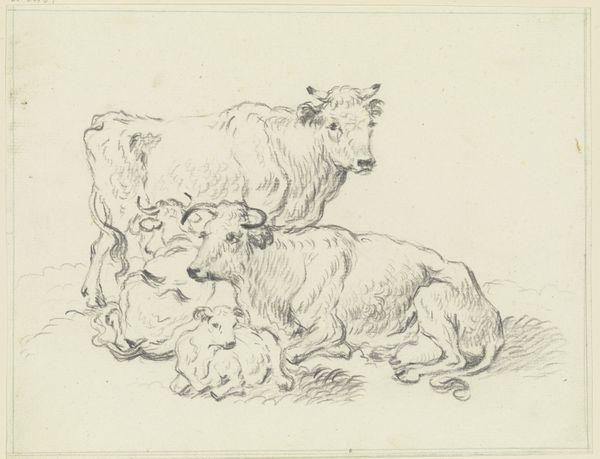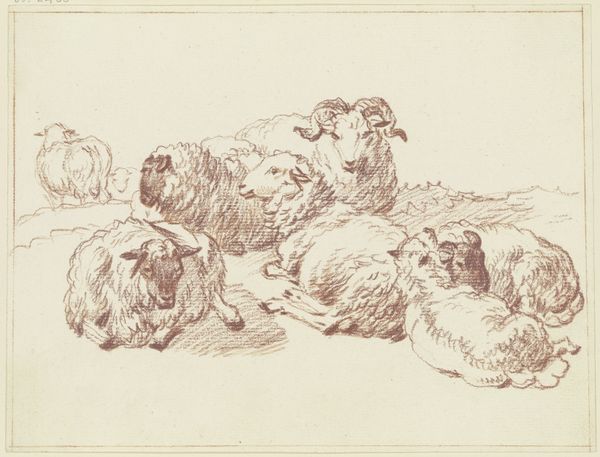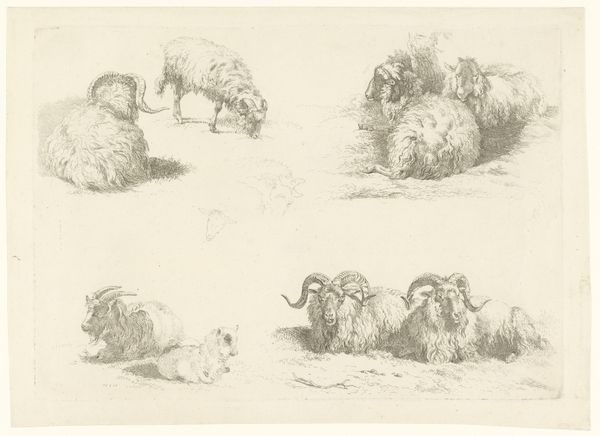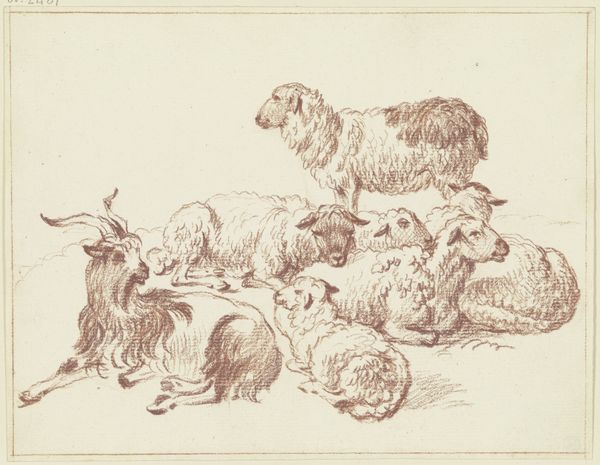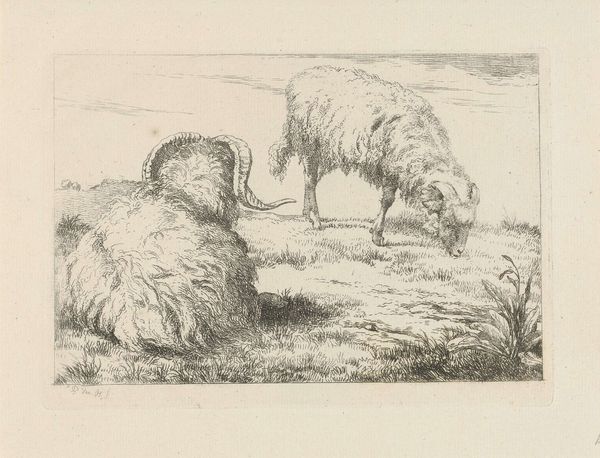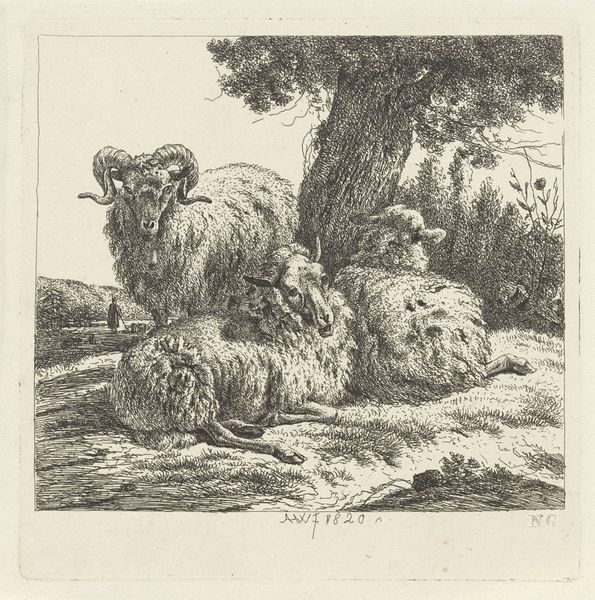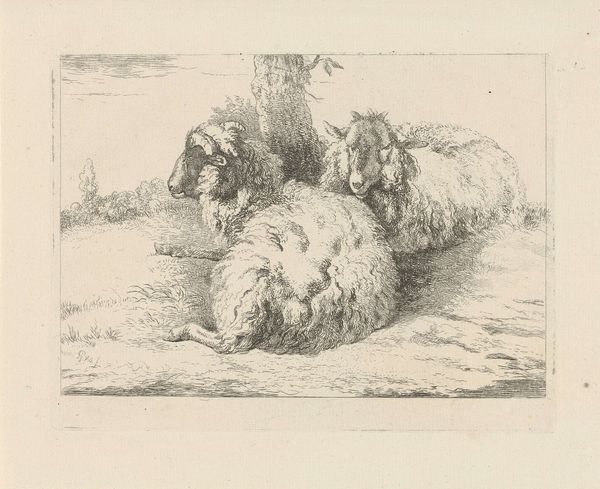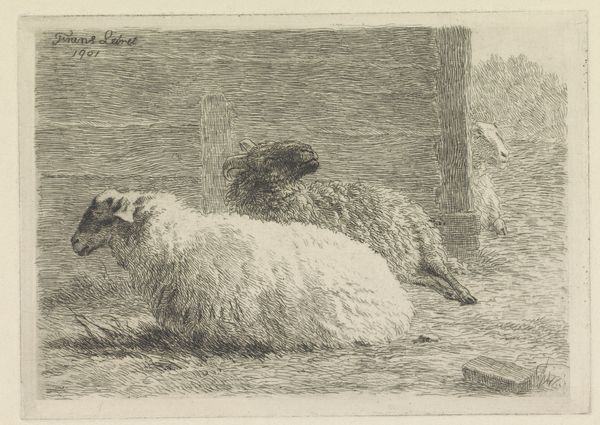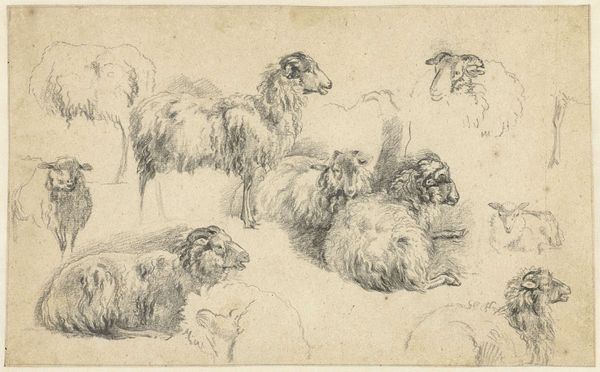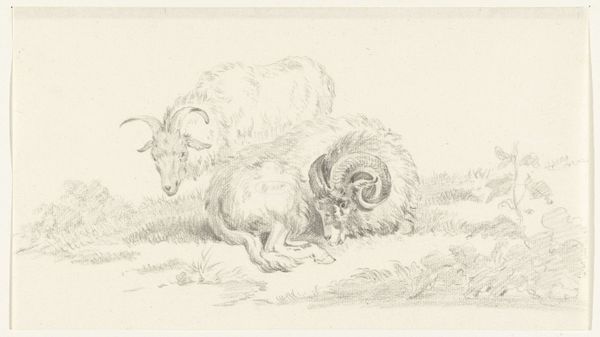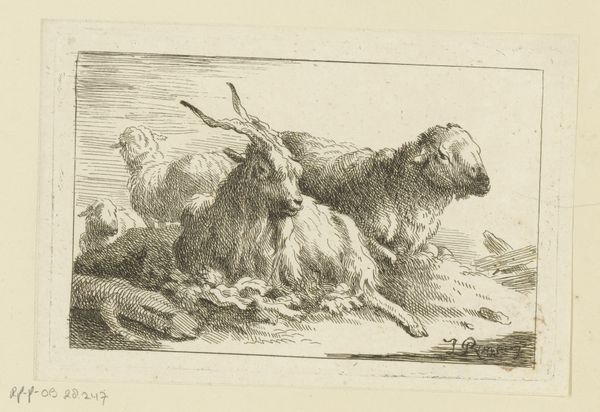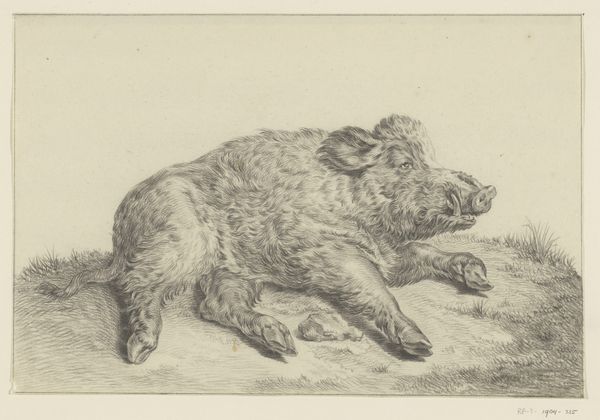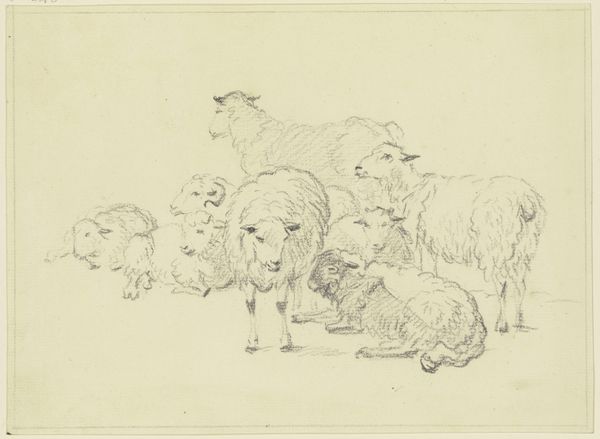
drawing, pencil
#
drawing
#
pencil sketch
#
landscape
#
pencil drawing
#
pencil
#
genre-painting
#
realism
Dimensions: height 145 mm, width 250 mm
Copyright: Rijks Museum: Open Domain
Dirk van Lokhorst made this image of nine sheep using etching. The image presents the idea of a peaceful rural idyll, but it also connects to wider social and cultural contexts that are crucial to understanding nineteenth-century Dutch art. Look at how the image creates meaning. It speaks of a rural economy and a national identity deeply rooted in the land. This etching was made in the Netherlands, a country that experienced significant social and economic changes during Lokhorst's lifetime. As the country urbanized and industrialized, art often reflected a nostalgia for the countryside, seen as a simpler, more virtuous past. Institutions like the Rijksmuseum played a role in shaping this national narrative by collecting and displaying art that celebrated Dutch heritage. To understand this artwork better, we can look into the economic conditions of Dutch agriculture in the 19th century, the development of national museums, and the cultural movements that idealized rural life. Art history is about understanding how these elements come together to give art its meaning and how it comments on the social structures of its time.
Comments
No comments
Be the first to comment and join the conversation on the ultimate creative platform.
